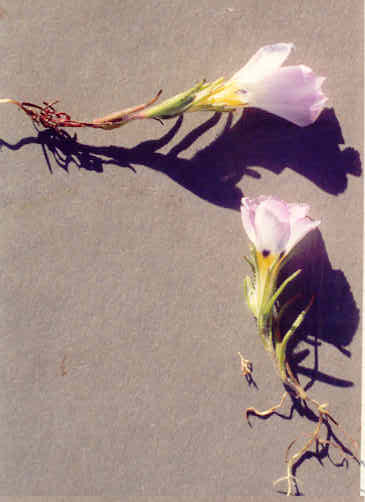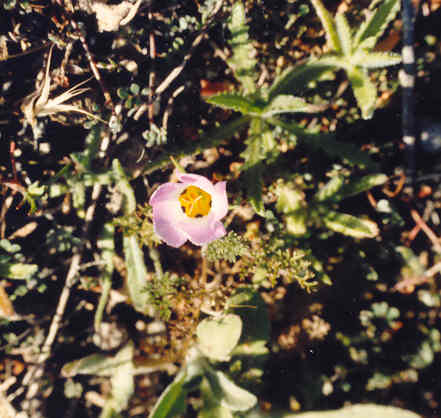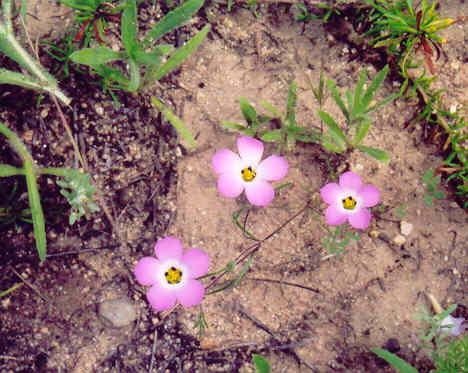
Linanthus dianthiflorus (Benth.) E. Greene
=Linanthus dianthiflorus
ssp. dianthiflorus
 |
Linanthus dianthiflorus (Benth.) E. Greene=Linanthus dianthiflorusssp. dianthiflorus
Polemoniaceae (Phlox Family)NativeGround-PinkMany Flowered Dianthus |
February Photo
Plant Characteristics: Annual,
usually with several very slender at first spreading, then erect stems 5-12 cm.
long, puberulent; lvs. entire, filiform, mostly opposite, 1-2 cm. long, shorter
than internodes; fls. solitary or in few-fld. leafy cymes, subsessile or with
short pedicels; calyx 10-16 mm. long, deeply cleft into linear lobes with
hyaline membrane filling lower half of sinus and for short distance on the
lobes; corolla short funnelform, pink to lilac or white, diurnal, 10-25 mm.
long, with dark basal spots and yellow throat, the lobes dentate, longer than
tube and throat; stamens inserted at base of throat; seeds many, round-oblong
with whitish angled membrane.
Habitat:
Common, open sandy places, below 4000 ft.; Coastal Sage Scrub, Chaparral,
V. Grassland; Santa Barbara to San Diego and w. edge of Colo. desert; n. L.
Calif. Feb.-April.
Name:
Greek, linon, flax and anthos, flower.
(Munz, Flora So. Calif. 658).
Dianthiflorus, means that these flowers resemble carnations.
(Dale 156). John Johnson
suggests that the resemblance to carnations is distant and the name may simply
describe the flower color.
General:
Uncommon in the study area and found only on a bench northerly of the
23rd St. (my comment).
This plant has been introduced into cultivation both in this country and
abroad under the name Fenzlia dianthiflora and several varieties are used
in edgings and in rock gardens. (Dale
156). A
genus of about 40 species mostly of w. North America. and Chile.
(Munz, Flora So. Calif. 658).
Subspecies dianthiflorus is not listed in the 1993 Jepson Manual.
(my comment).
The genus Linanthus is included within Gilia in Bailey.
(Bailey 824).
Text Ref:
Abrams Vol. III 685; Dale 155; Hickman, Ed. 842; Munz, Flora So. Calif.
661.
Photo Ref:
Feb-Mar 88 # 3,4.
Identity: by R. De Ruff, confirmed by F. Roberts.
Computer Ref: Plant Data 373.
Have plant specimen.
Last edit 5/30/03.
.
 |
 |
February Photo March Photo